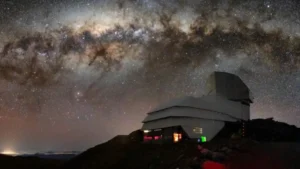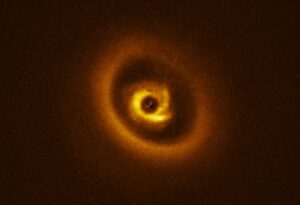We all know that there are 24 hours in a day, but this was not always the case. In the Mesozoic era, the Earth did a full turn on its axis in 23 hours. New research shows that if you go back even further, an Earth-day becomes even shorter. For example, 1.4 billion years ago there was only 18 hours and 41 minutes in a day.
We can credit our moon for this shift in time. When the moon first formed, it was 17 times closer to us than it is now. (Harvest moons must have been gigantic.) The orbit of the moon affects how the Earth spins. During the Proterozoic era, when the Earth and moon were closer together, our planet spun more quickly. Hence, the 19-hour day.
What is most unusual about this briefer day is how long it lasted. Our day had this length for almost a billion years. Both before and after, the length of day gradually increased. But in the middle of the Proterozoic era it stayed put. Scientists have suspected this since 1987 but have struggled to explain why.
A team from the China Academy of Science and Curtin University in Australia think they have discovered why the day remained at 19 hours for so long. Between one billion and two billion years ago, very little happened on Earth. Many scientists know this era as the “boring billion.” This coincides with the planet’s 19-hour rotation, and researchers now believe that the two are linked.

A day on Earth lasted 19 hours for one billion years. Photo: Mitchell & Kirscher, Nature Geoscience, 2023
Ozone layer kept the day in balance
The new study showed that the “boring billion” came just after our ozone layer formed. The ozone absorbed more sunlight, increasing the solar tides in the atmosphere. Solar tides are less important than lunar tides because the sun is so far away, but they do have an effect.
These atmospheric changes may have counteracted the pull of the moon as it gradually moved further away from Earth.
“If in the past, these two opposite forces were equal to each other, such a [solar] tidal resonance would have caused Earth’s day length to stop changing and to have remained constant for some time,” said study co-author Uwe Kirscher.
Even now, the length of our day is changing. The moon continues to move away from the Earth at a rate of 3.8cm a year. In turn, our days are getting incrementally longer, but at an almost undetectable rate. Every year, our day increases by just 0.000015 seconds.






